Lifting low reps is traditionally associated with strength gains. But can low rep ranges, say 5 reps per set, be enough to build muscle as effectively as higher rep ranges?
The 5-rep range is effective for gaining strength and muscle size. It’s most effectively used for compound movements such as the squat, deadlift, bench press, and barbell row. For the greatest hypertrophy benefits, it is recommended to lift heavy and increase weight over time.
This post shares the scientific evidence that supports the hypertrophy benefits of lifting 5 reps and how to lift in the 5-rep range for the fastest muscle gains.
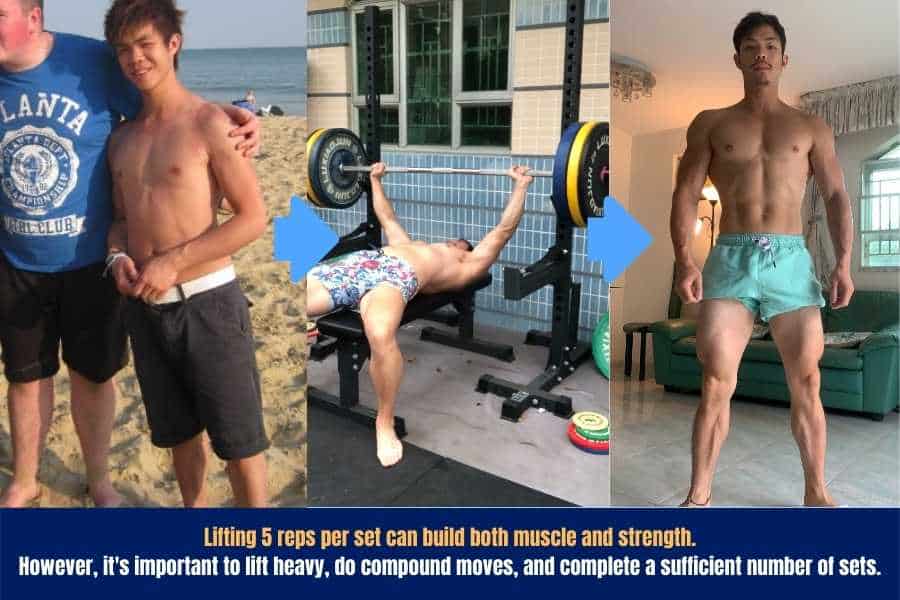
Key Takeaways
- The 5 rep range is great for building strength, but also for increasing muscle size.
- It’s most effective when used for big compound lifts.
- Lift heavy and complete 5-6 sets per exercise.
Scientific Evidence That 5 Reps Are Enough To Build Muscle
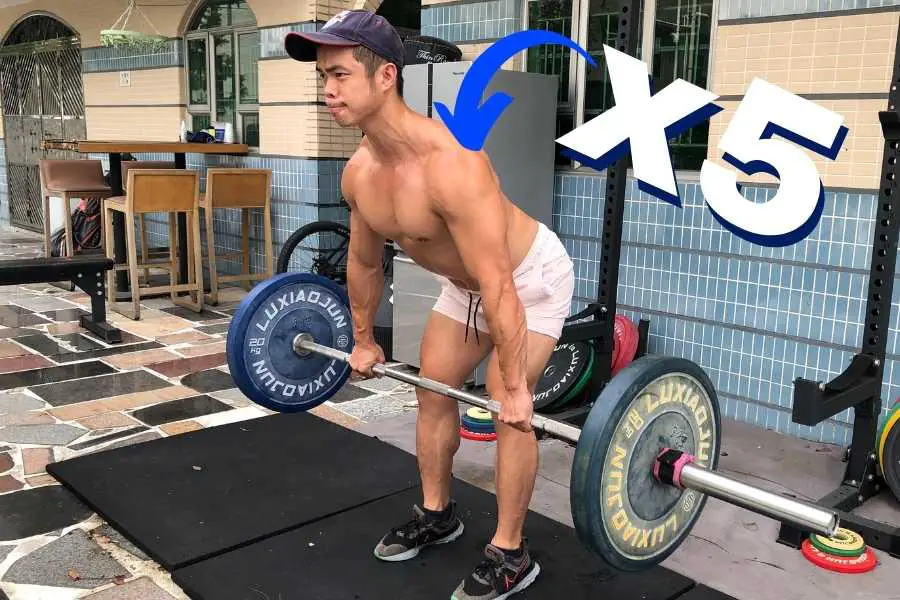
In this 2019 study, scientists compared muscle growth (also known as hypertrophy) in two groups of athletes who were put through a squat and bench press program:
- Group 1 subjects- performed 3 sets of 5 reps using a heavy weight.
- Group 2 subjects- performed 5 sets of 12 reps using a lighter weight.
Strength and muscle thickness was measured in the upper and lower body after 8 weeks of training.
What were the results?
Both groups gained just as much muscle size as the other. Furthermore, the group who worked in the 5-rep range gained more strength than the group who worked in the 12-rep range.
This supports the idea that working in the 5-rep range is not only enough to build muscle, but also just as effective as working in the 12-rep range (which is traditionally considered to be the best for hypertrophy).
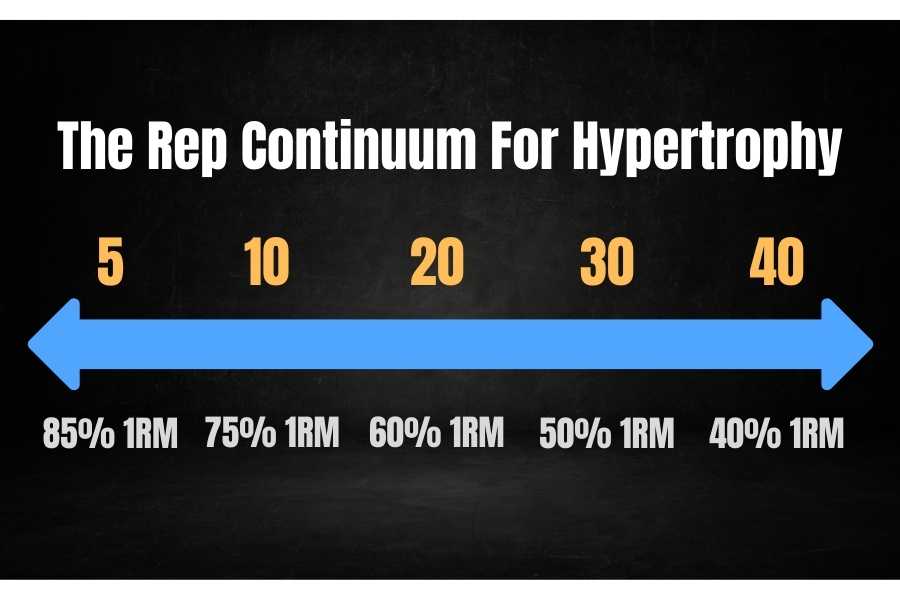
In support of these findings- this 2017 scientific review and this 2017 meta-review both concluded that muscle hypertrophy could be achieved across a wide spectrum of reps; from 5 all the way to 40 repetitions per set.
Additionally, both reviews concluded that lifting weights in lower rep ranges (e.g. 5 reps per set) are better for making strength gains comapred to higher rep ranges.
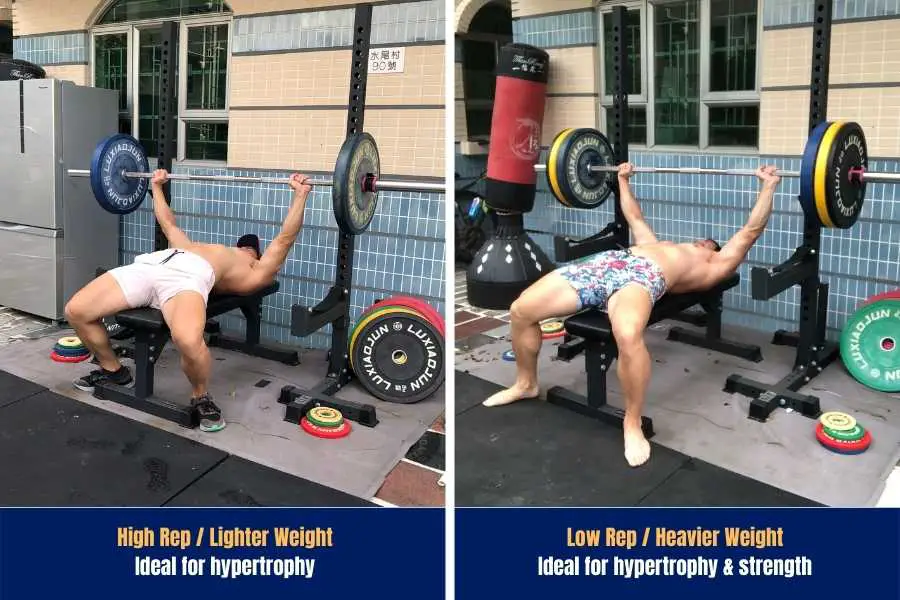
Take home message:
Both high and low reps can promote muscle hypertrophy. But lifting heavier weights in a low rep range is ideal for making strength gains.
Next, I’ll explain how I used low-rep workouts to build muscle effectively.
How To Lift Sets Of 5 Reps To Gain Muscle
Speaking from experience, it’s possible to get bigger muscles by lifting in a 5-rep range.
However, you can’t just expect to lift 5 reps per set and expect to get big. You also need to apply the following essential training techniques:
- Lift to near-failure. Doing sets of 5 reps is effective for building muscle only if each set is performed to near-failure. This means that by the fourth to fifth rep of each set, the target muscle should almost reach maximum fatigue. In other words- you should feel like you can’t physically squeeze out many more reps.
- Use heavy weights. This is essential for taking each set to failure. Use a weight that you find challenging for 5 reps. For most people, this equates to around 85% of your 1 rep max (1RM). You can check out my other post to learn how to use your 1RM to choose the ideal lifting weight.
- Apply progressive overload. Add more weight to your lifts as you naturally get stronger over time. This ensures your muscles are continually challenged by your 5 reps.
- Choose the correct exercises. Compound exercises are more suitable for lifting heavy in a 5-rep range than isolation exercises (see next section).
Muscle hypertrophy isn’t achieved through training alone. You also need to go on a bulking diet. For details, you can check it my guide to gaining your first 10lbs of lean mass.
Best Muscle-Building Exercises Using 5 Reps
Certain movements are better than others for building muscle using 5 reps. The compound lifts are ideal for lifting in the 5-rep range. Good examples include:
- Bench press.
- Shoulder press.
- Rows.
- Pull-ups.
- Dips.
- Squats.
- Deadlifts.
These movements engage multiple muscles simultaneously, and this makes them ideal for low-rep training where it’s best to lift heavy loads (the more muscles engaged equals more weight lifted).
In contrast- smaller isolation-type movements, such as bicep curling and tricep extensions, are generally better-suited to moderately high reps.
Ideal Number Of Sets For 5 Reps
5 to 6 sets are commonly completed to maximize muscle growth in the 5 rep range. Generally speaking, it is better to increase the number of sets when lifting fewer reps. This ensures a sufficient training volume is reached for optimal hypertrophy.
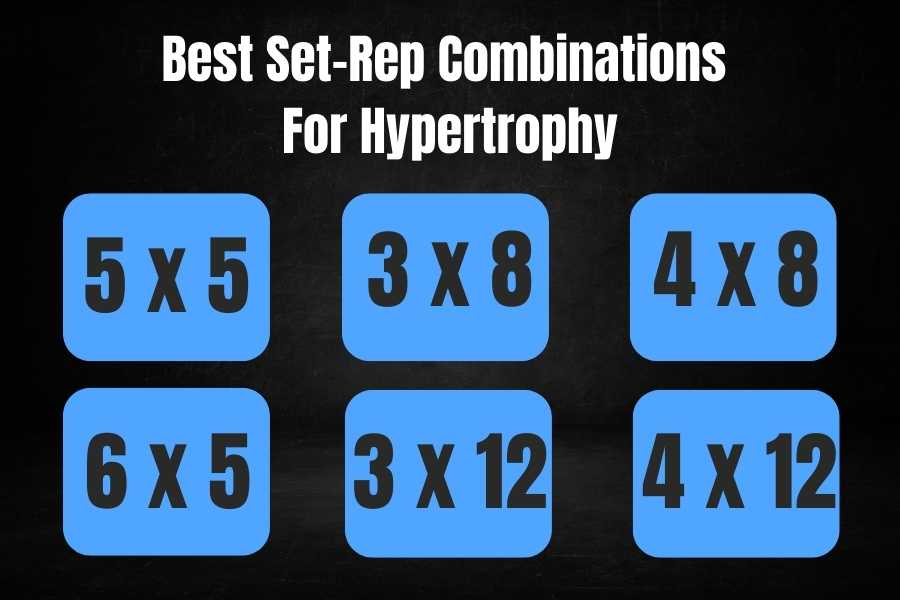
Doing 3 to 4 sets of 8 to 15 reps is traditionally regarded as the best for muscle growth.
However, reducing to 3 to 4 sets of 5 reps is less effective.
Why?
Remember- 5 reps is considerably fewer than 8-12 reps, meaning you’re completing a lower training volume (even when you account for the heavier weights lifted).
To balance things out and “equate training volume” in the 5 rep range, you can add an extra 2 sets to each exercise.
I find 5 sets of 5 reps to be ideal for making muscle size and strength gains.
With that being said, working in 3 to 4 sets of 5 reps can still promote muscle growth (particularly for newbies who generally find it easier to build muscle and get buff compared to trained lifters).
But it just won’t be AS effective as, say, doing 3 to 4 sets of 8-12 reps or 5 to 6 sets of 5 reps (both of which have a greater training volume).
Regardless of your chosen rep range, it is not advisable to exceed 6 sets per muscle per workout. Anything over 6 sets is generally considered to be “wasted sets” that do not give any added benefits to hypertrophy.
An Example 5-Rep Workout For Hypertrophy
The Stronglifts 5×5 program is a popular program that revolves around the 5 rep range. It’s a 3-day split (3 workouts per week) focusing on the bench press, shoulder press, row, squat, and deadlift. It’s designed for beginners to achieve maximum hypertrophy and build strength fast.
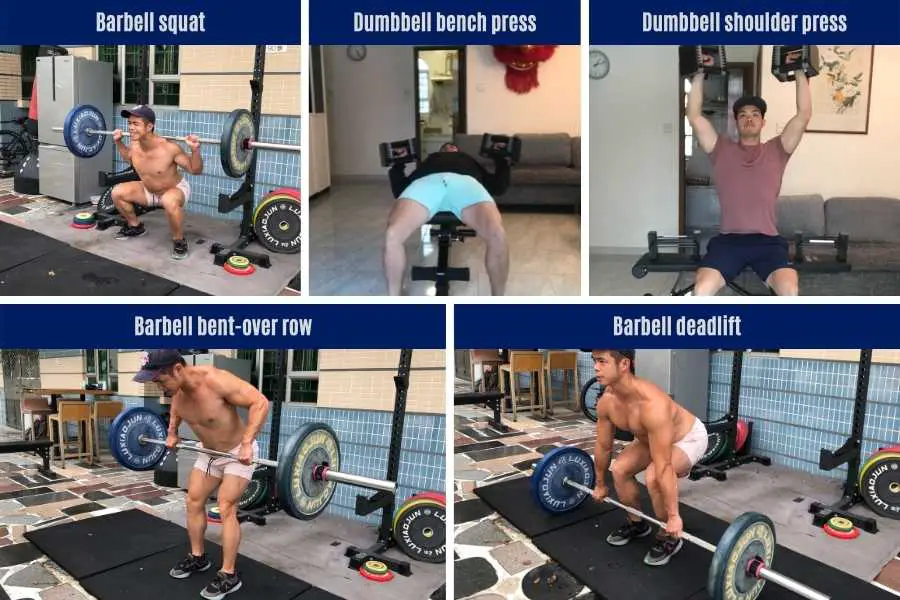
The premise of the 5×5 workout is to complete 5 heavy sets of 5 reps for the 5 main compound lifts mentioned above.
You’re typically lifting ~85% of your 1RM on each lift.
Additionally, the program has you progressive overloading regularly by lifting heavier weights in each workout.
I used this workout to great effect as a skinny guy trying to get stronger and more muscular.
But I found it lacked a vertical pulling movement.
If you’re interested, you can find my adapted 5×5 workout here, which includes pull-ups (one of the best vertical pulling exercises you can do to build muscle).
Benefits Of Lifting In A 5-Rep Range
Here are the main benefits of lifting 5 reps for building muscle and strength:
- Low reps are ideal for progressive overload. Decreasing reps means you can increase weight. This is great for building strength and applying progressive overload. Regular overloading is essential for skinny guys to get big fast.
- Effective for breaking strength plateaus. The lower the reps the more emphasis on strength and the less emphasis on endurance. This makes low-rep training ideal for breaking plateaus if you ever find yourself unable to progressive overload in higher rep ranges of, say, 8-12.
- Allows for short and intense workouts. Muscle can be effectively built without spending hours in the gym. Lifting heavy for low reps keeps your workouts short yet intense enough to drive hypertrophy.
- Ideal for making strength gains. Skinny beginners looking to get big are generally advised to first build a robust strength foundation as fast as possible. Lifting heavy in the 5 rep range is ideal to achieve this. Generally speaking, the stronger you are the bigger you are.
- As effective as moderate-high rep ranges for building muscle. 5 reps can be just as effective for a beginner to gain muscle as lifting in higher rep ranges like 8-12 reps. However, it’s essential to lift heavy and complete a sufficient number of sets.
Conclusion
5 reps are not only great for building strength but also enough to build muscle (assuming you lift heavy and increase the number of sets).
I recommend lifting ~85% of your 1RM for 5 sets.
Additionally, the 5 rep range lends itself to the big compound movements that allow you to shift the heaviest weights possible.
You may also be interested in the downloadable Kalibre Blueprint PDF which details exactly how I gained 40lbs of lean muscle (it’s 100% free!). It details the exact exercises and nutrition (with printables) I used to go from skinny to ripped!


